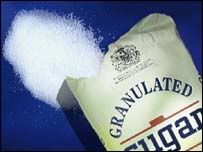This time I convinced my wife to go with me. It took a bit of convincing, because she has attended a few bee functions, and knows about the ... ahem... "interesting" personalities of the members of the WCBA (and you won't find a one to disagree with her). But, being the supportive wife that she is, she decided to take one for the team and go with me. We got a babysitter, left the kids at home, and made an evening of it.
A year ago I sat next to a couple of friends from the club, and this year I looked for the same people. I saw Michelle again and steered her towards our table, so we got to visit with her and her husband and 2 children. They were very well behaved, and so were their children! :-)
One of the things which convinced my wife to go was that the featured speaker was going to speak on companion gardening, the idea you plant companion plants together to naturally keep pests away, thus reducing your need and dependence on chemical pesticides. Usually it is a combination of some kind of an aromatic herb paired with a vegetable. As beekeepers we try to be as naturally possible. When we do use chemicals, we use the bare minimums we can to achieve the desired effect. I've learned the goal of pesticides with bees is not to eradicate the pest, but to reduced the population to the point where the bees can manage the load. You'll never eliminate 100% of the mites in a hive, for example, but if the number of mites is low enough the bees can manage it.
One of the fun things of that evening is that people bring in items to donate to a club raffle. The club itself puts together large gift baskets (there were 4 this year), and everyone gets one ticket to be drawn to win one of the baskets (we didn't win any of those). For the items that others bring in to raffle off, people buy multiple tickets and you put as many as you want in each cup in front of the item you want to bid on. Depending on how bad you want the item, you can stack the odds by putting more than one ticket in the cup.
My wife had her eye on a cute pumpkin ceramic centerpiece, and between her tickets and mine, she won it!

I put in for a few things, but I saw and won this neat jar of honey. It wasn't clear like most honey - it was a type of crystallized honey.

It isn't like what happens at your house where the honey becomes solid like a rock, and you have to heat it up to liquefy it. No, this is done on purpose and the honey has very fine crystals in it, too small to see. The honey is still spreadable, but a little thicker and opaque. This honey was from New Hampshire, and was absolutely delicious! Before getting into beekeeping I never knew the different tastes of honey (plus, the honey you buy from the store is usually pasteurized, which affects the taste). Too bad I couldn't have any of my own honey to taste (maybe next year!).






